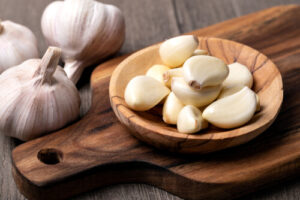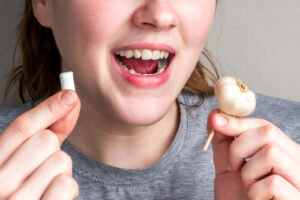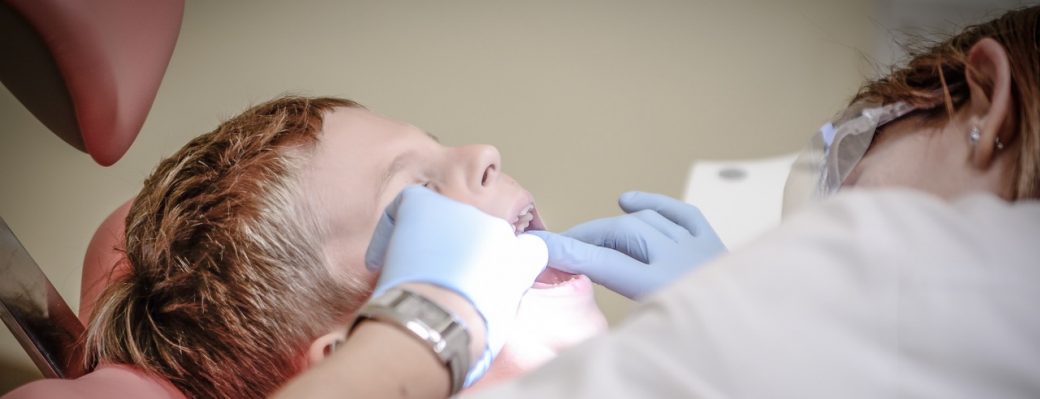Garlic for toothache may sound like an old wives’ tale, but this aromatic herb holds surprising benefits for dental pain. In this article, we delve into the science behind garlic’s analgesic properties and explore how this kitchen staple might relieve those suffering from toothaches.
Discover the potential of garlic as a natural remedy for painful teeth, and learn how to harness its power effectively and safely. Stay tuned as we unravel the intriguing connection between garlic and oral health.
Exploring the Historical Use of Garlic in Dental Care
Garlic has been revered not only as a culinary ingredient but also as a medicinal plant throughout history. This exploration delves into the traditional use of garlic in dental care, uncovering its role in various cultures before the advent of modern dentistry.
- Raw Garlic in Traditional Remedies: Cultures worldwide have used raw garlic cloves directly on the affected tooth. This practice, deeply rooted in home remedies, leveraged the natural potency of fresh garlic to alleviate tooth pain.
- Crushed Garlic for Toothache Relief: Often, crushed raw garlic, sometimes turned into a paste, was applied to ease tooth pain. This method relied on garlic’s anti-inflammatory properties, temporarily relieving sore or painful teeth.
- Garlic’s Antimicrobial Qualities: Recognized for its antimicrobial and antibacterial properties, garlic was used to combat tooth decay and infections. These attributes made garlic a valuable tool for maintaining oral health without modern dental treatments.
- Garlic Beyond Pain Relief: Beyond easing tooth pain, garlic was believed to improve oral health. Its use in treating gum infections and reducing inflammation showcases its broader impact on dental well-being.
- Cultural Significance and Variations: The use of garlic varied across cultures, with some also incorporating it with other ingredients like olive oil or clove oil. These combinations targeted toothaches and addressed issues like gum infection and swelling.
The Science Behind Garlic’s Pain-Relieving Properties
The humble kitchen staple, garlic, is not just for flavoring dishes but also a potent natural remedy for toothache pain. This deep dive into the science behind garlic’s pain-relieving properties reveals why and how this common ingredient can be a powerful ally against dental discomfort.
- Allicin: The Key Compound: When raw garlic is crushed, it releases allicin, a compound known for its strong antimicrobial and antibacterial properties. These properties are crucial in combating the bacteria that cause tooth infections and decay.
- Anti-inflammatory Effects: Garlic also exhibits anti-inflammatory properties. This is particularly beneficial in reducing swelling and pain in toothaches and gum infection cases.
- Application Methods for Relief: The most effective way to use garlic for tooth pain relief involves directly applying crushed raw garlic or a paste made from raw garlic cloves to the affected area. This method ensures direct contact with the sore tooth or gum, providing localized relief.
- Garlic vs. Modern Dental Treatments: While not a substitute for professional dental care, garlic can temporarily ease tooth pain. It’s a traditional remedy that complements modern treatments, especially when immediate dental care isn’t available.
- Considerations and Precautions: It’s important to use garlic cautiously. Too much garlic can irritate, and its strong odor may not be pleasant for everyone. Always consult a health professional before trying new home remedies, especially if you have ongoing dental issues.
How to Use Garlic Safely and Effectively for Toothache Relief

Garlic, with its natural antibacterial and anti-inflammatory properties, offers a unique approach to alleviating tooth pain. This segment focuses on utilizing garlic safely and effectively for toothache relief, ensuring maximum benefit and minimizing adverse effects.
- Selecting the Right Garlic: Opt for fresh garlic rather than garlic powder or supplements. Fresh garlic retains essential compounds like allicin, crucial for its pain-relieving effects.
- Preparing the Garlic: Crush a raw garlic clove to release its beneficial compounds. You can create a paste by mixing crushed garlic with olive oil, which helps apply it to the affected tooth.
- Applying Garlic to the Affected Area: Apply the crushed raw garlic or garlic paste directly onto the sore tooth or gum. A cotton swab can be used for more precise application, ensuring the garlic targets the area of pain.
- Duration and Frequency of Application: Leave the garlic in place for a few minutes for it to take effect. It’s advisable not to overuse garlic; limit applications to a few times a day to prevent gums and oral mucosa irritation.
- Rinsing After Application: Rinse your mouth with warm water after using garlic. This helps to remove any residual garlic and alleviates the strong odor, which can be a significant drawback of this remedy.
Comparing Garlic with Modern Dental Treatments for Toothache
Garlic, known for its antimicrobial and anti-inflammatory properties, has been a traditional remedy for tooth pain and decay, but how does it stack up against modern dental treatments?
- Effectiveness in Pain Relief: Garlic, especially in its raw form, can temporarily relieve toothache due to its natural compounds like allicin. However, modern treatments, backed by scientific research, offer targeted and often more effective pain relief, especially for severe cases.
- Treating the Underlying Causes: While garlic can address symptoms like pain and inflammation, modern dental treatments are designed to treat the root causes of toothache, such as cavities, infections, and gum disease.
- Ease of Use and Accessibility: Garlic is readily available and easy to apply, making it a convenient option for immediate relief. In contrast, modern dental treatments require professional intervention but assure long-term solutions.
- Side Effects and Risks: Using garlic can lead to irritation of the gums and a strong odor, and it’s not suitable for everyone. While generally safe, modern dental treatments can have risks and side effects, depending on the procedure.
Potential Side Effects and Precautions When Using Garlic for Oral Health

While garlic has strong antimicrobial and anti-inflammatory properties, and particularly effective in treating toothaches, it’s crucial to be aware of its potential side effects and necessary precautions. This examination highlights the risks and guidelines for using garlic safely for oral health.
- Risk of Gum and Mouth Irritation: One of the primary concerns with using raw garlic, especially in the form of crushed garlic or garlic paste, is the potential for irritating the gums and oral mucosa. Prolonged or excessive contact with concentrated garlic can lead to discomfort or even burns.
- Allergic Reactions: Some individuals may have allergies to garlic. It’s essential to be aware of any allergic tendencies and to perform a patch test before applying garlic to the affected area in the mouth.
- Strong Odor and Taste: Garlic is known for its pungent odor and taste, which can be unpleasant when applied in the mouth. This can be a significant drawback for many people and might lead to bad breath or garlic breath.
- Interaction with Other Medications: Garlic has the potential to interact with certain medications, particularly blood thinners. It’s important to consult a health professional before using garlic for oral health, especially if you’re on medication.
In conclusion, garlic has been widely used for centuries as a natural remedy for toothache due to its antimicrobial and anti-inflammatory properties. Its active compound, allicin, can help alleviate pain and reduce swelling in the affected area. Though research on the effectiveness of garlic supplements is limited, many individuals have reported positive results when using garlic for toothache relief. Incorporating garlic into your oral hygiene routine may temporarily relieve toothache symptoms, but it is still essential to consult a dentist for proper diagnosis and treatment.
References
Using Garlic for Toothaches: Efficacy of the Home Remedy
https://www.healthline.com/health/garlic-for-toothache
Garlic: a review of potential therapeutic effects – PMC
https://www.ncbi.nlm.nih.gov/pmc/articles/PMC4103721/
Garlic & Tooth Pain
https://www.colgate.com/en-us/oral-health/brushing-and-flossing/how-to-use-garlic-to-cure-toothache
Toothache – NHS inform
https://www.nhsinform.scot/illnesses-and-conditions/mouth/toothache/#:~:text=Toothache%20occurs%20when%20the%20innermost,hard%20surface%20of%20the%20tooth
Toothache: Symptoms, Causes & Remedies
https://my.clevelandclinic.org/health/diseases/10957-toothache


